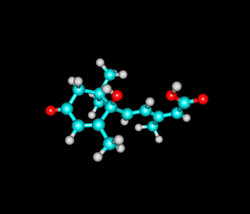Plant root responses to water scarcity
The HYDROTROPISM (Abscisic acid and the mechanisms that regulate hydrotropism) project investigated the link between mechanisms that guide root growth away from regions of low water potential with adaptive responses caused by the growth inhibitor abscisic acid (ABA). Researchers sought to identify the mechanism by which an environmental signal causes a modification in root growth and the proteins involved in its transmission. They identified the importance of the root tip and the elongation zone for moisture perception and hypothesised that an ABA gradient between the two sides of the root could be the signal causing differential growth, resulting in root bending. Researchers determined how ABA is transported between tissues and organs using split agar-based plates containing two media with different water potential. This enabled measurement of the hydrotropic response as an estimation of root curvature and was used to analyse this response in mutants affected in ABA transport or biosynthesis. Scientists screened the hydrotropic phenotype of knock-out mutants of the ABA transporters. Results indicated that only part of the machinery could participate in the response and that genetic redundancy could mask the phenotype in families of genes with a high number of members. New targets were identified to gain a better understanding of this process. Therefore, RNA sequencing (RNAseq) was carried out on RNA extracted from the root tips of hydrotropically stimulated wild-type seedlings and compared to the same material from the hydrotropic response snrk2.2snrk2.3. This was then studied using the split agar system to determine if they show hydrotropic defects. In addition to the study of molecular mechanisms, researchers also used X-ray computed tomography imaging to visualise how roots grow towards parts of the soil with higher water content. This information together with the RNAseq data enabled scientists to understand the relationship between the different pathways participating in the hydrotropic response, thereby increasing knowledge of how plants adapt to drought. HYDROTROPISM outcomes will have a direct impact on improving crop productivity in areas where water is a limiting factor and help create tools for reducing crop loss through drought.
Keywords
Water scarcity, drought, root growth, abscisic acid, split agar, hydrotropic

